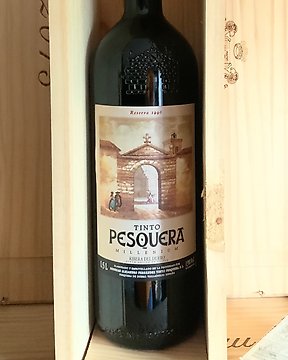
1996 Alejandro Fernández, Tinto Pesquera Millenium - Ribera del Duero Reserva - 1 Magnum (1,5 L)
Nr. 83341583

Nr. 83341583

This Tenpo tsuho comes from a private collection in an coin card, which is made in a traditional way. The use of coin cards is the ancient (traditional) method of Chinese collectors to display their beautiful coins.
Tenpōtsūhō was idea of Kinza to compete with Ginza's Kan'eitsūhō 4 Mon. The first lot was casted in 15 months period between 1835 and 1836, with a total of 29 710 700 pieces casted. The production was restarted again in mid-1837 and until 1842, additional 10 024 500 pieces casted. The Edo government gained 180 800 Ryō of profit for these cast.
The production was then restarted again in 1847 and in 1865, a new Senza was established in Nanba, Osaka, which casted the coin until 1868. After Meiji Restoration, the currency official of the new government restarted the cast, between 1868 and 1870, 63 913 752 pieces were casted. The total mintage since the first cast is 484 804 054 pieces.
Officially only produced in the mints of Honza in Edo and Osaka. However, because it was so profitable to make them, they were illegally cast in more than 10 provincial mints like Kurume, Satsuma, Fukuoka, Kochi, Yamaguchi, Aizu, Sendai, Akita and Morioka. Mito Domain was one that get permission to cast from Edo government.
Official coins were cast with very fine sand from Bosho and have a smooth field, unofficial casts used a much coarser sand and have much more grainy fields.
More than 586 740 000 pieces were withdrawn in Meiji period. The number exceeded the official mintage for more than a hundred million pieces. As not all coins were withdrawn, it is likely that more than 200 000 000 pieces of provincial issue were casted.
After the establishment of the modern currency system this 100 mon coin was valued at only 8 rin. Due to low value, less than 1 Sen compared to the size, and being in interchange of old and new era, the word Tenpōsen were used for describing outdated person or person that has incompability to develop themselves to the new era.
The coins stopped being issued on the 31st December Meiji 24 (1891) and stopped being exchanged for new currency at the end of Meiji 29 (1896).
Actual dimensions: 48.6x32.4 mm,
holerim 10.6x10.6 mm,
weigth: 21.21 gram.
Please take a good look at the photos, they are part of the description.
They provide a clear picture of the quality and condition of the product and they fill in any gaps in the text or correct any errors and are decisive for the description of the product."
Sådan køber du hos Catawiki
1. Opdag noget særligt
2. Afgiv det højeste bud
3. Foretag en sikker betaling